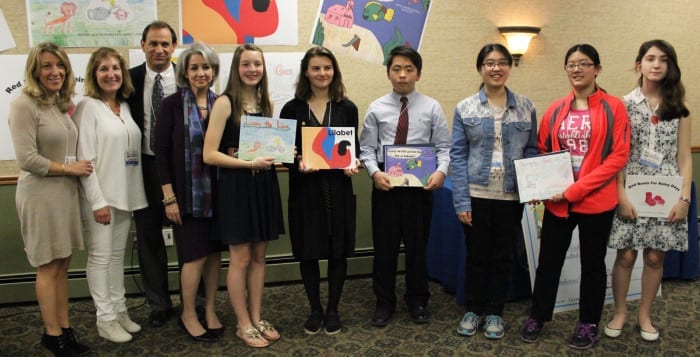Burglar busted
A 22-year-old Port Jefferson Station man was arrested on Ontario Street on April 22 at about 12:45 p.m. and charged with possessing burglary tools. Police said the man was found inside an abandoned home with black gloves, a hammer, a fire iron, metal snips and a chisel.
Napkin-thin defense
Police said a 22-year-old man from Port Jefferson Station was arrested on April 26 and charged with assault, recklessly causing physical injury. Police said that at about 12:53 a.m. at Schafer’s restaurant on West Broadway in Port Jefferson, the man threw a napkin dispenser at someone, resulting in a laceration on the victim’s right eye that required medical attention.
Streetfighter
A 29-year-old man from Port Jefferson was arrested on Main Street on April 21 at about 6:55 p.m. and charged with disorderly conduct, fighting/violent behavior and resisting arrest. Police said the man was fighting with another man in the middle of the street.
First cut is the deepest
A 20-year-old woman from Rocky Point was arrested on April 23 at about 10:30 p.m. and charged with assault with intent to cause physical injury with a weapon. Police said the woman slashed another woman with a knife in a parking lot on County Road 83 in Holtsville.
Drug dealer caught
Police arrested a 28-year-old man from Centereach on Middle Country Road on April 23 and charged him with third-degree criminal sale of a controlled substance. He was also charged with four counts of criminal possession of a narcotic drug, four counts of third-degree criminal possession of a controlled substance with intent to sell and one count of criminal possession of a controlled substance. Police said the man was found that day at about 1:37 p.m. in possession of heroin. He was arraigned the next day and held in lieu of posting a $20,000 cash or $40,000 bail bond, according to court records.
It wasn’t me
A 35-year-old man from Selden was arrested on April 21 and charged with third-degree aggravated unlicensed operation of a motor vehicle and second-degree criminal impersonation. Police said he gave a fake name and fake identification at Mooney Pond Road and South Bicycle Path in Selden and was arrested at the scene at 3:46 p.m.
Facing the music
Police arrested a 23-year-old Selden man on April 24 and charged him with two counts of petit larceny and one count of fourth-degree grand larceny of property valued at more than $1,000. Police said the man stole a Bose sound bar and a Sony bluetooth speaker from a location on Horseblock Road in Medford on two separate days. He also took five watches from a location in Sayville on April 16.
ShopWrong
A 34-year-old Selden woman was arrested on April 24 and charged with leaving the scene of property damage. Police said on April 18 the woman backed her 2006 GMC Envoy into a Honda Civic in the parking lot of ShopRite on College Plaza at about 9 p.m.
Bills, bills, bills
A 21-year-old man from Bellport was arrested in Stony Brook late on April 23 and charged with first-degree possession of a forged instrument. Police said the man had two counterfeit $10 bills and six counterfeit $50 bills.
Let’s bounce
A man told police a bouncer at Junior’s Spycoast on Main Street in Port Jefferson pushed him at 3:20 a.m. on April 26. There were no arrests.
Hotmail
Someone set off fireworks in a mailbox, causing it to melt, at a home on Old Rocky Point Road in Miller Place sometime between 9:50 and 10:20 p.m. on April 24.
Shopping for a victim
Someone lifted a purse out of a shopping cart at Marshalls on Nesconset Highway in Stony Brook sometime between 5 and 7 p.m. on April 23. The purse contained a wallet and credit cards.
Case of the stolen beer
A man walked out of Stop & Shop on Route 25A in Setauket-East Setauket with a case of beer on April 21, at about 7:47 p.m., and didn’t pay for it.
Call me
A prepaid phone was stolen from a home on William Penn Drive in Stony Brook sometime between 11 a.m. on April 18 and 1 p.m. on April 20. The incident was reported on April 22.
Stopped up
A 32-year-old man from Selden was arrested in the parking lot of a Home Depot in Setauket-East Setauket on April 21 and charged with petit larceny. Police said that at about 1:45 p.m. he took wrenches and plumbing fittings from the store.
Phoning it in
A man from Brandywine Drive in Setauket-East Setauket told police someone fraudulently accessed his AT&T wireless account to obtain an iPhone 6. The incident was reported on April 23 at 3:30 p.m. and occurred sometime between Feb. 20 and April 8.
Jeep Grand Cherokey
Someone keyed a 2012 Jeep Grand Cherokee parked at Danfords Hotel & Marina on East Broadway in Port Jefferson on April 24 at about 5:30 p.m. There were no arrests.
Temper tantrum
A 32-year-old man from Stony Brook was arrested in Smithtown and charged with obstructing traffic and resisting arrest on April 26. Police said that at about 5:25 a.m. at the corner of Edgewood Avenue and Glenrich Drive in St. James he was standing in the middle of the street and became violent and belligerent as cars attempted to pass him. He also refused to comply with a police officer’s demands.
Caffeine crash
Police arrested a 17-year-old teen from Nesconset in Smithtown on April 21 and charged him with criminal mischief — reckless property damage in an amount less than $250. Police said that the teen pushed a coffee-making machine off the counter at a 7-Eleven on Smithtown Boulevard, causing damage to it at 9:52 p.m. on April 8.
Be right back
A 34-year-old woman from St. James was arrested at her home on Copperbeech Road on April 25 and charged with operating a motor vehicle and leaving the scene of an accident. The incident happened on Lake Avenue in St. James on March 19 at about 2:10 p.m., where police said the woman was involved in a reportable car accident. She was driving a 2011 Toyota Sienna and fled the scene of the accident.
Swords, bow and arrow jacked
A Smithtown complainant from Jerome Street told police someone took a laptop, bow and arrows and swords from a shopping center at 2150 Nesconset Highway in Stony Brook sometime on April 24 between 10:30 and 11:40 a.m.
Tire troubles
Two cars parked on Hawkins Avenue in Smithtown were damaged in two separate incidents that occurred on April 22 at 10 p.m., police said. Two tires of a 2007 Infiniti were damaged, and an unknown person also slashed a tire on a 2015 Kia.
Plate taken
Someone removed a license plate from a 2011 Ford pickup truck parked on Standish Place in Smithtown sometime between April 25 at 8:30 p.m. and April 26 at 8:30 p.m.
Push ‘n shove
A man told police another man pushed him at America’s Best Value Inn on Nesconset Highway in Nesconset at about 6:30 p.m. on April 26.
Fence face-lift
An unknown person spray-painted multiple sections of a fence on Pine Drive in Nesconset sometime between April 24 at 8 p.m. and April 25 at 9:30 a.m.
iSad
Someone broke the driver-side window of a 2008 Ford parked on Bennett Street in Kings Park and stole an iPad. The incident happened sometime between 11:30 p.m. on April 20 and 5:30 a.m. on April 21.
Out of tune
Someone took an electronic guitar, cable, wireless system and tuner from a 2014 Lexus parked on Lou Avenue in Kings Park sometime between April 19 at 11:30 p.m. and April 20 at 7 a.m.
Jewels, cash taken
Jewelry and cash was stolen from a home on Drew Drive in St. James sometime between 8 a.m. on March 26 and 2 p.m. on April 21.
Paper stolen
Multiple reams of paper were stolen from a school on Moriches Road in St. James sometime between March 27 and April 20.
Car climbing a tree
A 27-year-old man from Cold Spring Harbor was arrested in Huntington on April 25 and charged with driving while intoxicated with a blood alcohol concentration of .08 of 1 percent. Police said that on April 25, at about 5:48 a.m., the man was heading west on Holdsworth Drive in Huntington when he drove up an embankment at Oakwood Road and struck a tree.
Stolen car, pills and a fake check
Police arrested a 50-year-old man from Huntington on April 23 and charged him with fourth-degree criminal possession of stolen property, seventh-degree criminal possession of a controlled substance and second-degree possession of a forged instrument. Police said that at the corner of Kerri Court and Park Avenue in Huntington after midnight, the man was found to be operating a stolen 2002 Toyota. He was also found with prescription pills without a prescription and also appeared to possess a fraudulent check.
Halloween shenanigans
A 17-year-old from East Northport was arrested in Huntington on April 24 and charged with third-degree criminal tampering. Police said that on Halloween last year at 8:55 p.m. on Wendy Lane in Elwood, he intentionally ran through a vinyl fence, damaging it. He was arrested at 4:40 p.m. at the precinct.
Brawler busted
Police arrested a 50-year-old man from St. James on April 20 in Huntington and charged him with third-degree assault, with intent to cause physical injury. On March 27 at about 7:40 a.m., police said the man grabbed another male by his sweatshirt on New York Avenue and both individuals fell to the ground. The man then punched the victim in the face. The victim suffered a broken nose, concussion and required medical attention, including stitches. He was arrested at the 2nd Precinct.
Persistent thief thwarted
Police said a 32-year-old East Northport man was arrested on April 26 at his home on Loret Lane in East Northport and charged with a flurry of petit larcenies in the area spanning March 25 to April 4. Sometime between March 25 and March 26 on Norton Drive in East Northport, he stole ear buds, a phone charger and cash. On March 26 at about 1:50 a.m., he stole Ray-Ban sunglasses and cash from a home on Joseph Court. That same day, he stole two portable DVD players and phone chargers from another home on Joseph Court. Sometime between April 3 at 8 p.m. and April 4 at 4:30 a.m., he stole an iPhone 5 and iPod from Tanager Lane in Fort Salonga. He also took a Garmin GPS sometime between April 3 at 11 p.m. and April 4 at 6 a.m. from a location at Gilder Court in Fort Salonga. Police said that at Bobolink Lane in Fort Salonga the man stole prescription pills.
Window broken in bar fight
A window was broken during a fight at Finley’s of Greene Street in Huntington on April 26 at 3 a.m., police said.
Man stabbed
Someone told police he was stabbed by an unknown person in a parking lot on West Hills Road in Huntington on April 26. The call came in at about 4:20 a.m. The victim said he required medical treatment.
Temple looted
Someone took money from a locked file cabinet drawer at Temple Beth El on Park Avenue in Huntington sometime March 31 and April 14. The incident was reported on April 23.



















